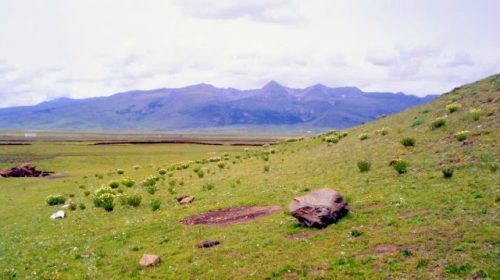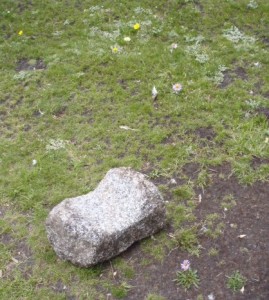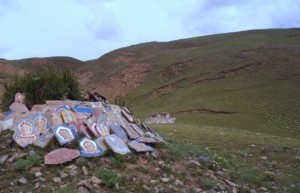Sky burial.
Brian Hennessy. An Australian in China. 2007
In the Tibetan township of Litang, which is 4,200 metres above sea-level on the Tibet-Qinghai Plateau in West Sichuan, sky burials occur every Monday, Wednesday, and Friday.
Sky burial
______________________________________________________________
I had the chance to attend a sky-burial, but declined the invitation. It shouldn’t be an event for voyeurs.
So I went on Tuesday with a Khamba friend who described his people’s belief system, and explained the sky-burial process, as we walked to the place on the outskirts of town where the bodies of the deceased are prepared for their final journey.
A beautiful, peaceful place. A low hill dominated by a high grassy range to the rear, with a view across Litang to the left, and the valley grassland in the foreground. In the distance the brooding giant Mount Genie rests in silent respect, guarding Litang and its nomad people.
Vultures sitting on the ridge behind. Black shapes on a verdant green, silhouetted against a grey-blue sky. It will rain later today.
There are prayer flags on the top of the hill as you would expect. A large stone mound supporting colourful plaques inscribed in the graceful beauty of the Tibetan script has pride of place. Memorials to loved ones, I guess.
Clumps of yellow and purple wildflowers sprout in random patches around the slopes of this holy space…this earthy place of goodbye…this portal to the sky.
Here and there, brown or mottled grey and brown flat stones are surrounded by dark patches of earth where the grass will not grow. Some with a worn hollowed surface. Altars of departure and transformation. Reminders of my own mortality and my own puny place in the grand scheme of things.
A jolt of reality, a reminder of what happens here…of what happened here yesterday, and of what will happen here again tomorrow. If I died today, could I countenance this reality tomorrow? Could I believe?
These days most western people have a little knowledge of Buddhism and reincarnation. The new information for me is that Tibetan people regard the vulture as sacred bird, an avian intermediary responsible for returning an empty human vehicle to the elements. A transforming, transcending process rather than a disposal.
How else could a family stay and watch, as these birds devour the remains of a personality they love? The spirit or soul of the deceased a reality, an entity now taking its new place somewhere in a continuing cycle of life. Immortality.
The Duoden is the man who works in tandem with these sacred birds. He is a scrupulously clean man, who is not allowed to marry. However, his sacred profession is passed down to succeeding generations of his family via the children of a sister of brother. His responsibility and his duty demand the commitment and chastity of a monk. He serves his community. He is a special person in this culture.
I see the knife which cuts the flesh, I see the hammer which crushes the bones, and I see the imprints of these instruments on the small rock-altars scattered around the hillside.
I see the stakes to which a rope is attached…a rope which secures the body to the hillside as the sacred birds eat and drink the body and blood of humanity.
I see the plates where the mixture of human brain and tsampa is offered to the sky.
We Catholics should find it easier than most to understand the significance of all this. To see beyond the ritual. To understand the meaning.
This is no barbaric custom. Far from it.




